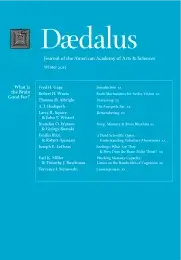The Energetic Ear
As the gateway to human communication, the sense of hearing is of enormous importance in our lives. Research on hearing has recently been revolutionized by the demonstration that the ear is not simply a passive receiver for sound, but also an amplifier that augments, filters, and compresses its inputs. Hair cells, the ear’s sensory receptors, use two distinct methods to implement an active process that endows our hearing with these remarkable properties. First, the vibration-sensitive structures of the ear, called hair bundles, display a mechanical instability that allows them to oscillate in response to stimulation. And second, the membranes of hair cells are replete with proteins that contract in response to electrical stimuli, thus enabling the cells to act like tiny muscles. The activity of these two motile processes can be so exuberant as to cause normal ears to emit sounds.
Most of us use hearing aids. Electronic devices amplify sound for the benefit of those with compromised hearing, whereas the ears of people with normal hearing contain biological structures that serve an identical function. This so-called active process can amplify sounds by more than a hundred-fold. The ear’s intrinsic amplifier additionally tunes our responsiveness to specific frequencies of sound, thus facilitating the recognition of sound sources and the discrimination of speech. The active process also allows us to analyze acoustic signals over a million-fold range of magnitudes, compressing responses so that we can appreciate both soloist and orchestra. Most remarkably, the ear’s native hearing aid can, like an electronic device, become unstable, leading to the emission of sounds from the ear. Hearing is a highly adaptive sensory modality, for it provides an early warning of potential adversaries or predators and a foretaste of possible prey while they are still distant. In these endeavors, there is a clear advantage in having the most sensitive and discriminating auditory apparatus. Evolution has accordingly fostered an active process whose performance approaches the limits set by the physics of sound. . . .
Access the full volume here.
